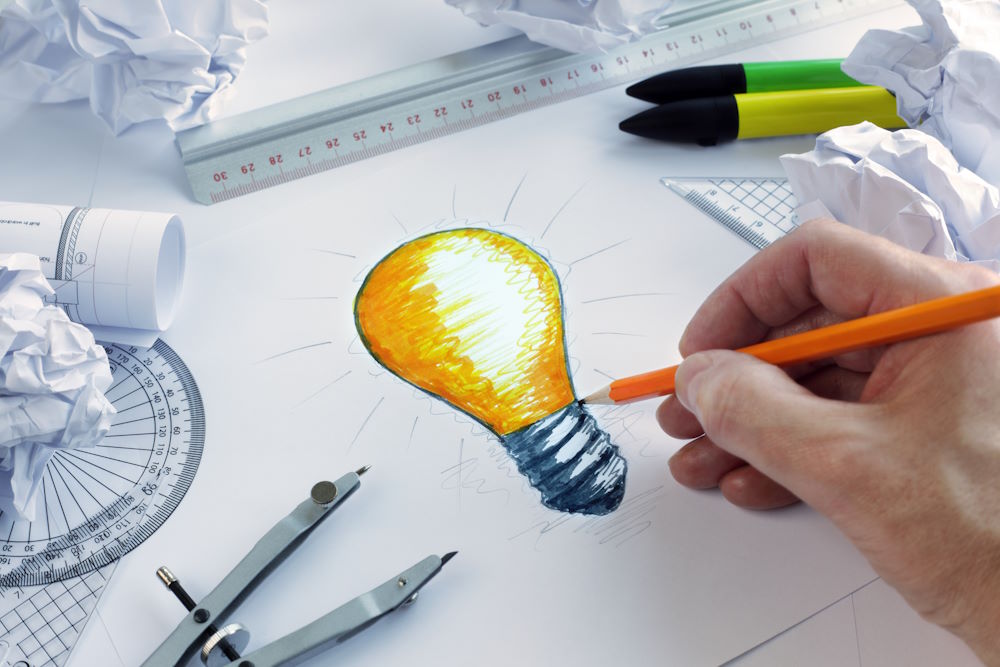Innovation has become a buzzword in business, especially in the post-pandemic era.
Millions of print books and a plethora of digital content on the topic clamour for the attention of would-be entrepreneurs. And more than 80 percent of executives regard innovation as a top priority.
But there’s nothing new about innovating breakthrough products and services. We owe a huge debt of gratitude to the true innovators – inventors whose ideas took the business world by storm.
We decided to take a look at some of the people who’ve transformed our lives. Here’s our pick of top innovators/inventors down the years.
Johannes Gutenberg – the printing press
German printer, goldsmith and inventor Johannes Gutenberg triggered the printing revolution when he invented the movable-type printing press sometime around 1436.
His adaptation of the printing press was key in helping steer Europe out of the Middle Ages. Books containing priceless information were mass-produced in high quality and made available to all literate Europeans.
What thanks did Gutenberg get? He died penniless, with creditors impounding his presses.
Charles Babbage – the computer
English inventor and mathematician Charles Babbage (1791-1871) was the first computer pioneer, although he never got round to actually building one.
His Analytical Engine was in effect an automatic digital computer controlled entirely by a program.
This piece of kit had four components essential in modern computers:
- Mill – like the central processing unit (CPU) in today’s computers.
- Store to hold data prior to processing – analogous to computer memory.
- Reader – for data input.
- Printer – data output.
Babbage also contributed significantly in other areas. He helped establish England’s modern postal system and invented the locomotive cowcatcher and a type of speedometer.
Thomas Edison – numerous inventions
Thomas Edison (1847-1932) was a prolific American innovator who patented thousands of inventions that helped define the modern world.
He invented the phonograph and the movie camera and improved telegraphic and telephone systems.
Although he’s credited with inventing the incandescent lightbulb, several other innovators paved the way. It was Edison, however, who hit on the idea of a platinum filament in a glass vacuum bulb.
Edison was a shrewd figure in the business world, turning his inventions into popular products to sell to the public.
George de Mestral – Velcro
In the 1940s Swiss engineer George de Mestral developed a fabric with tiny loops and hooks that stuck together on contact. The result was the Velcro brand, which went on to revolutionise clothing.
De Mestral got his idea for hook-and-loop fasteners when walking his dog in the woods and spiky cockleburs began to cling to his clothes and his pet’s fur.
When he later examined the burs under a microscope, he saw they were covered with hooks that grabbed onto anything with a loop, including clothing fibres.
Percy Spencer – the microwave oven
In 1945 self-taught American engineer and physicist Percy Spencer (1894-1970) wondered why chocolate in his pocket was melting when he went near a magnetron machine during his work for a radar research company.
It quickly dawned on him that the cause of his gloopy confectionery was the high-frequency radio waves being emitted by the device. He placed popcorn kernels near the magnetron, and the world’s first microwave popcorn was soon popping out over the lab floor.
The first microwave oven – called a radar range – went on sale in 1947. It was almost six feet in height and weighed nearly 54 stone (343 kilogrammes).
The first domestic microwave oven hit the market in 1955 but was still a bulky piece of equipment.
A smaller magnetron for microwave ovens was developed in Japan, resulting in the first compact, practical microwave oven in 1967.
Today, microwave ovens pop popcorn and melt chocolate in millions of homes worldwide.
Robert Noyce and Jack Kilby – the integrated circuit
American electrical engineers Robert Noyce and Jack Kilby independently developed the integrated circuit almost simultaneously.
Kilby worked on making the individual circuit components in the late 1950s. Noyce found a better way to connect the parts, and this integrated circuit was patented in 1961 while Kilby’s patent application was still being considered.
The import of their work was that various electrical circuit components could be incorporated into a single semiconductor silicon microchip, which powers all of today’s electronics.
Sir Tim Berners-Lee – the worldwide web
The worldwide web originated with British scientist Sir Tim Berners-Lee.
In 1989 he was a software engineer working with the European particle physics research organisation (CERN).
He came up with idea of hypertext documents for sharing information among scientists around the world.
CERN put the software in the public domain, which allowed the web to flourish as a system of interlinked documents across the internet.
The worldwide web opened up the internet to everyone, connecting the world in a way that has transformed how we get and share information and communicate.
Sir James Dyson – the bagless vacuum cleaner
English inventor and entrepreneur Sir James Dyson has used new technologies to develop numerous ground-breaking products.
The most notable of these is probably the bagless vacuum cleaner, based on centrifugal force to lift dust and dirt, and cyclonic separation to maintain optimal suction.
It took more than 5,000 prototypes and several years to perfect the idea, which was patented in 1986. It was worth all the effort, though. The Dyson brand became the most popular vacuum cleaner in the UK.
What does the future hold?
Inventors are forever striving to create the next big thing. Something that will amaze the world and transform society.
So, what innovations and inventions with applications in our daily lives might become commonplace as the 21st century progresses.
Worldwide access to solar power and nuclear fusion to power homes?
Computers and robots with artificial emotional intelligence?
Advanced exoskeleton suits to make us stronger?
Hyperloop global transport systems using a vacuum?
These ideas may sound far-fetched but some of this futuristic tech is already being developed. And past inventions that seemed implausible at the time are taken for granted today.
Right now someone, somewhere, could be dreaming up the next amazing invention that will change the world for the better.



